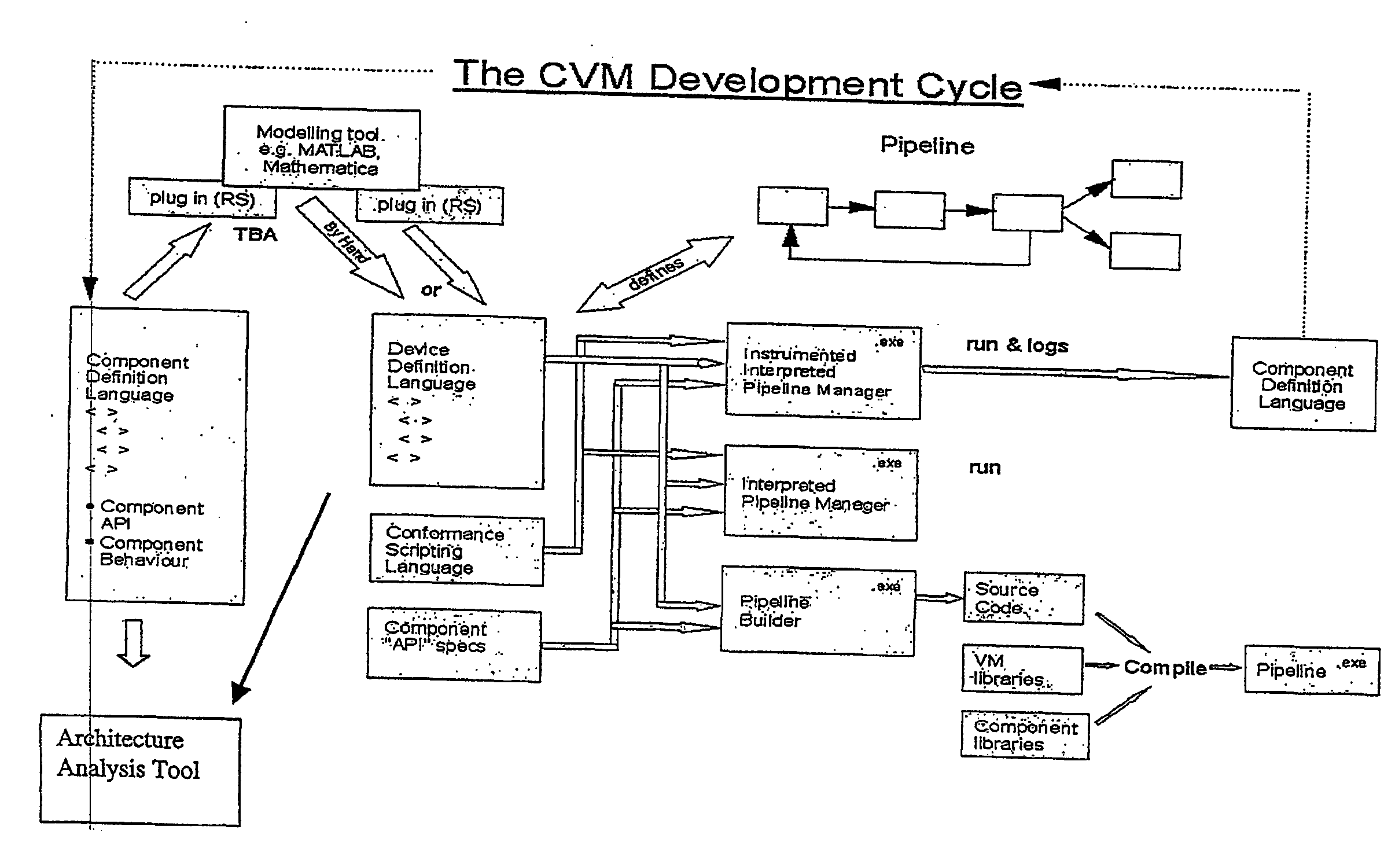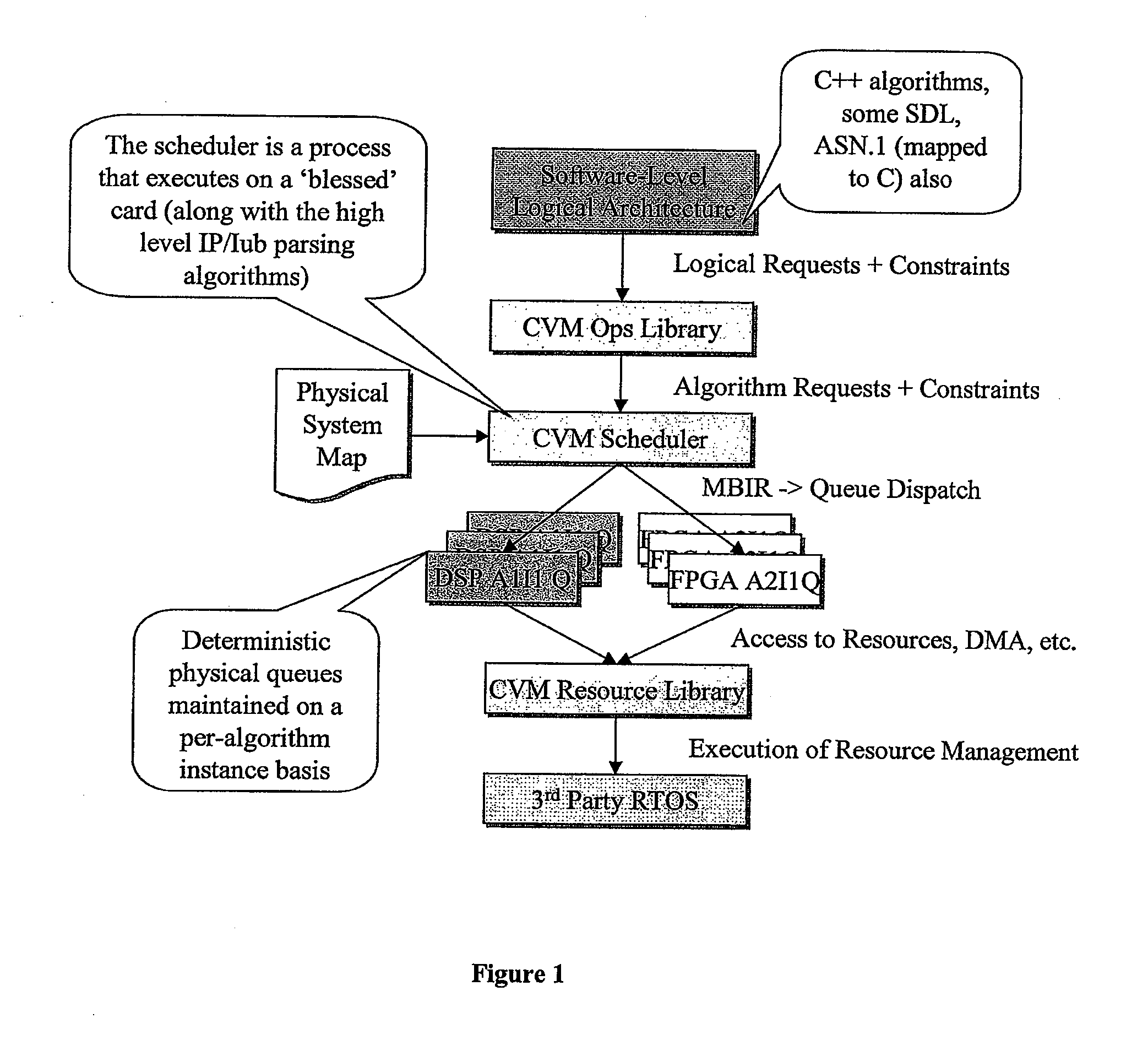Digital wireless basestation
a wireless basestation and wireless technology, applied in the field of digital wireless basestations, can solve the problems of difficult for rf suppliers with highly specialised analogue design skills to develop products, and achieve the effect of high efficiency
- Summary
- Abstract
- Description
- Claims
- Application Information
AI Technical Summary
Benefits of technology
Problems solved by technology
Method used
Image
Examples
Embodiment Construction
[0043] The present invention will be described with reference to an implementation from RadioScape Limited of London, England of a software defined radio (“SDR”) basestation, running over a Generic Baseband Processor (“GBP™”). The basestation is a UMTS node-b. As noted above, the essence of the RadioScape approach is to use commodity protocols and hardware to turn a basestation, previously a highly expensive, vendor-locked, application specific product, into a generic, scalable baseband platform, capable of executing many different modulation standards with simply a change of software. In the RadioScape system, IP is used to connect this device to the backnet, and IP is also used to feed digitised IF to and from third party RF modules, using an open data and control format.
[0044] The SDR-based UMTS node-b basestation is a software description (in C++, DSP assembler and Handel-C / VHDL) running over the GBP. The GBP is a powerful hardware platform designed to provide the MIPs and thro...
PUM
 Login to View More
Login to View More Abstract
Description
Claims
Application Information
 Login to View More
Login to View More - R&D
- Intellectual Property
- Life Sciences
- Materials
- Tech Scout
- Unparalleled Data Quality
- Higher Quality Content
- 60% Fewer Hallucinations
Browse by: Latest US Patents, China's latest patents, Technical Efficacy Thesaurus, Application Domain, Technology Topic, Popular Technical Reports.
© 2025 PatSnap. All rights reserved.Legal|Privacy policy|Modern Slavery Act Transparency Statement|Sitemap|About US| Contact US: help@patsnap.com



